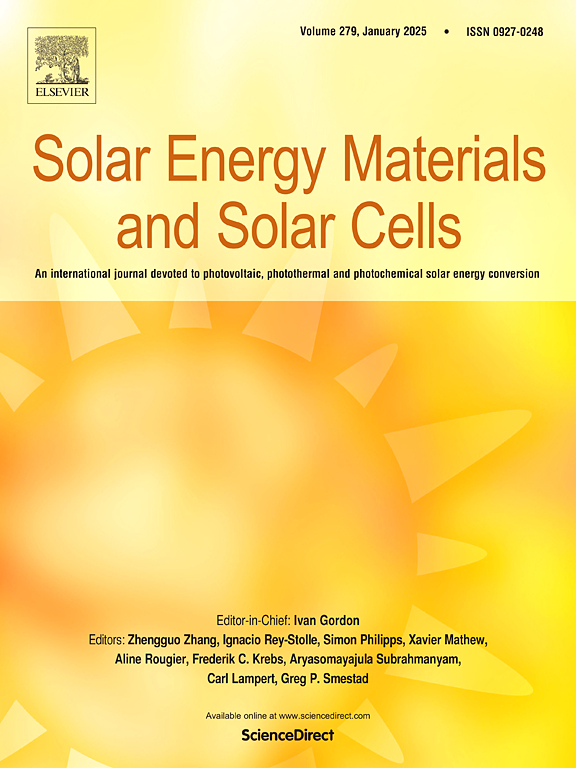高效背接触隧道氧化物钝化接触太阳能电池的物理机制和设计策略
IF 6.3
2区 材料科学
Q2 ENERGY & FUELS
引用次数: 0
摘要
基于后触点的隧道氧化钝化触点(TBC)太阳能电池(SCs)因其具有高效潜力和可大规模量产的优势,成为未来光伏产业发展的重要研究热点之一。然而,由于对TBC SCs的工作机制和高效的技术途径缺乏清晰的认识,目前TBC SCs的效率尚未达到预期水平。在这里,我们通过全面的仿真研究阐明了物理机制,并提出了设计高效TBC SCs的详细策略。仿真结果表明,高效的TBC sc需要延长载流子寿命,改善前表面钝化,减少p区界面复合。此外,我们还指出优化的细胞尺寸应该平衡载流子运输和重组损失。具体而言,对于小间距器件,减小p型接触区域的填充尺寸比是有利的,而对于大间距器件,则需要较大的p型接触区域填充尺寸比。此外,基于当前的钝化接触质量和器件集成水平,预计效率可达28%。本研究详细揭示了该装置的工作机理,为高效TBC SCs的制备提供参考。本文章由计算机程序翻译,如有差异,请以英文原文为准。
Physical mechanisms and design strategies for high-efficiency back contact tunnel oxide passivating contact solar cells
Back contact-based tunnel oxide passivating contact (TBC) solar cells (SCs) represent one of the significant research focuses for future development in the photovoltaic industry, owing to their advantages of high-efficiency potential and compatibility with large-scale mass production lines. However, the current efficiency of TBC SCs has not yet reached the expected level due to a lack of clear understanding of the working mechanisms and high-efficiency technological pathways. Here, we clarify the physical mechanisms and propose detailed strategies for designing high-efficiency TBC SCs through a comprehensive simulation study. The simulation results indicate that high-efficiency TBC SCs require extended carrier lifetimes, improved front-surface passivation, and minimized interface recombination in the p-region. Additionally, we also point out that the optimized cell size should balance carrier transport and recombination losses. Specifically, for small-pitch devices, reducing the fill size ratio of the p-type contact proves advantageous, whereas for large-pitch devices, a relatively larger fill size ratio of the p-type contact region is required. Moreover, based on the current passivation contact quality and device integration level, an efficiency of up to 28% is anticipated. This study reveals the working mechanism of the device in detail, providing a reference for the preparation of high-efficiency TBC SCs.
求助全文
通过发布文献求助,成功后即可免费获取论文全文。
去求助
来源期刊

Solar Energy Materials and Solar Cells
工程技术-材料科学:综合
CiteScore
12.60
自引率
11.60%
发文量
513
审稿时长
47 days
期刊介绍:
Solar Energy Materials & Solar Cells is intended as a vehicle for the dissemination of research results on materials science and technology related to photovoltaic, photothermal and photoelectrochemical solar energy conversion. Materials science is taken in the broadest possible sense and encompasses physics, chemistry, optics, materials fabrication and analysis for all types of materials.
 求助内容:
求助内容: 应助结果提醒方式:
应助结果提醒方式:


